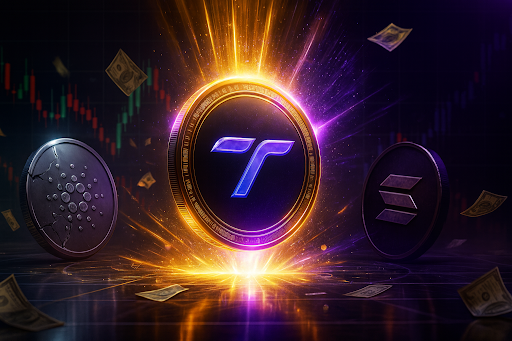TLDR
- SEC Chair Paul Atkins clarifies that most tokens like XRP, ADA, and DOGE are not securities under Project Crypto.
- Project Crypto aims to provide clear rules for crypto activities such as trading, lending, and staking.
- SEC supports crypto “super-apps” for trading, lending, and staking under one regulatory framework.
- Atkins praises the EU’s MiCA framework, suggesting the U.S. could adopt similar approaches for crypto regulation.
In a major address at the Organization for Economic Cooperation and Development (OECD) Roundtable in Paris on Wednesday, SEC Chair Paul Atkins unveiled details about Project Crypto, a new initiative aimed at modernizing U.S. securities regulations for blockchain-based financial markets. Atkins made it clear that most crypto tokens, though he did not mention specifics such as XRP, ADA, SOL, and DOGE, are not considered securities under this new framework.
Atkins emphasized that this move signals a shift in the SEC’s approach toward crypto regulation. “Policy will no longer be set by ad hoc enforcement actions,” Atkins said, contrasting the current administration’s more measured approach with the previous regime’s aggressive crackdown on crypto firms. Under Project Crypto, the SEC aims to provide clear and predictable rules for crypto activities like trading, lending, and staking.
Project Crypto: A Unified Framework for Crypto Activities
The core goal of Project Crypto is to create a unified regulatory framework that encompasses a range of crypto activities. The SEC’s new plan seeks to integrate crypto trading, lending, and staking under one umbrella, providing a streamlined approach for operators within the space. Atkins stressed that the SEC’s aim is to protect investors while fostering innovation.
“We will provide clear, predictable rules of the road so that innovators can thrive in the United States,” Atkins remarked during his keynote address. This marks a significant departure from the SEC’s past reliance on enforcement actions, with the new initiative seeking to modernize securities regulations to accommodate the rise of blockchain technology.
The Case for Crypto “Super-Apps”
As part of the SEC’s updated regulatory strategy, Atkins also called for the allowance of crypto “super-apps.” These platforms would be able to facilitate multiple functions, including the trading, lending, and staking of digital assets, all under one regulatory framework. The SEC’s proposal envisions these super-apps offering multiple custody solutions, enabling users to access various services within the crypto ecosystem through a single platform.
Atkins emphasized that the SEC’s approach would avoid overburdening entrepreneurs with overly complex or duplicative rules, which may disproportionately favor larger incumbents.
“Regulators should provide the minimum effective dose of regulation needed to protect investors, and no more,” Atkins said, underscoring the need for an efficient regulatory approach that supports growth in the crypto industry.
Global Perspectives on Crypto Regulation
During his remarks, Atkins also acknowledged the European Union’s Markets in Crypto-Assets (MiCA) framework, which he praised as a comprehensive digital assets regime. According to Atkins, U.S. policymakers could learn valuable lessons from Europe’s early regulatory steps.
He pointed out that international cooperation will be crucial to facilitating more innovative markets and ensuring the continued development of the global crypto ecosystem.
Atkins noted that the SEC is committed to working closely with global regulators to create a more integrated and supportive environment for digital assets. This international collaboration is seen as key to fostering innovation while safeguarding against risks in the rapidly evolving crypto sector.





